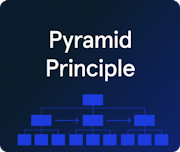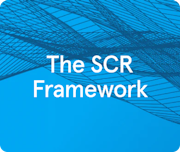Market Analysis Templates
Here you will find ready-to-use PowerPoint templates to quickly and easily create competitive market analysis presentations like top-tier strategy consultants.
Market Presentation Resources
Tips and tricks for market presentations
Take your presentation to the next level
Market analysis: Turn market research into strategic insights
How to create an effective market analysis report like top-tier strategy consultants
In every business, staying ahead of the curve requires a deep understanding of the market landscape. A well-crafted market analysis can translate data and research into insights and help guide strategic decision-making toward the success and growth of your business.
Why do a Market Analysis?
Most businesses have nearly unlimited options when deciding what to focus on. Should we enter this market, go after this customer segment, lower the price, or develop a new digital product? Market analysis is essential for answering these questions by turning market data and research into insights. Be it your strategy team, product development team, or even CEO, the insights offered by market analysis are fundamental to data-driven decision-making, reducing reliance on guesswork and intuition.
Let's look at a few examples where market analysis can be of great value:
Understanding market opportunities and threats
Markets are constantly evolving, and so should your business. Market analysis can help you spot new growth areas and prepare for potential threats like new market entrants, technology shifts, or changes in customer behavior.
Analyzing customer needs and preferences
Understanding who your customers are, what they want, how they behave, and how best to serve and reach them is fundamental to the success and growth of any business. Market analysis can help you better understand these needs and preferences, allowing you to fine-tune your products, services, and marketing efforts accordingly.
Identifying key competitors and competitive dynamics
It is not enough to understand your customers; you must also study your competitors. Market analysis provides insights into what competitors are doing and what works well for them. An effective market analysis analyzes both current market shares and gives a qualified bet on where those shares are headed and why.
Businesses can use this information to identify unmet needs or gaps in the market, offering opportunities for innovation and differentiation. Knowledge about competitors' strategies, strengths, and weaknesses can also help businesses refine their own strategies to gain a competitive edge.
Guiding product development and innovation
Market analysis can reveal gaps in the current market offerings. By identifying what is missing or underserved, businesses can innovate and create products and services to fill these gaps or expand into new customer segments. By analyzing market trends and shifts, businesses can anticipate future demand and develop innovative products to capture it.
Informing business planning and strategy
Market analysis is crucial for business planning and strategy, providing insights into target markets and enabling tailored product and service offerings. This analysis keeps businesses aligned with market trends and forecasts, which is essential for long-term planning. It also aids in risk management by identifying potential market challenges and opportunities.
Guiding market expansion and selection
Expanding into a new market without understanding the local competition, customer preferences, and overall conditions will lead to strategic missteps. Market analysis can help identify new markets where your product or service will likely succeed.
Components of an effective Market Analysis?
A market analysis typically consists of three components. While each component has its distinct focus, they are interrelated and must be considered together for a holistic understanding of the market.
Industry Analysis
This first component focuses on the industry in which the business operates or wants to expand into. This analysis covers the industry's size, growth rate, dynamics, trends, and overall outlook. This component often includes an analysis of external factors like economic, political, social, technological, environmental, and legal aspects (also known as PESTLE analysis).
Industry analysis can often be done through desk research. Collect data on industry size, growth rate, trends, and patterns. Sources include industry reports, government publications, academic research, and trade publications. Expert interviews with industry insiders can also be an effective way to identify trends and shifts.
The industry analysis can be broken down into the following parts:
- Market size and growth: Estimate the historical and forecasted market size to understand its potential and growth trajectory.
- Industry structure analysis: Identify key players, market segments, and distribution channels. Try to understand how this structure is evolving over time.
- Market trends: Analyze emerging trends, new technologies, and business models shaping the industry. This step is important for anticipating future changes and aligning strategies accordingly.
- Competitive forces and market dynamics: Evaluate the competitive landscape at a high level. This often encompasses analyzing the bargaining power between buyers and suppliers, identifying potential entry barriers for new competitors, and understanding the threat of substitute products or services.
- Regulatory and legal environment: Understand relevant policies, laws, and compliance requirements to navigate the legal landscape and mitigate potential risks effectively.
Target Market Analysis
This part of the analysis focuses on understanding a specific target market within the industry. The aim here is to understand the nuances of potential customer segments, encompassing their demographics, buying patterns, needs, preferences, and overall demand for products or services. This analysis is critical to identifying your target segments and shaping your value propositions.
The target market analysis can be broken down into the following parts:
- Target market segmentation: Divide the target market into distinct customer segments based on shared characteristics, such as demographics, psychographics, behavior, location, or other relevant factors. This allows for a tailored approach to understanding and addressing the needs of each segment.
- Customer analysis: Conduct in-depth research into the needs, preferences, motivations, and purchasing behaviors of each target market segment. Understanding buying patterns and preferences enables you to align products, services, and marketing strategies accordingly.
- Market size and growth: Gather data on each segment's historical and projected market size to assess its potential and growth trajectory. This understanding helps determine the viability of targeting specific segments and the overall market opportunity.
- Market trends: Analyze emerging trends, technologies, and innovations shaping the market landscape. Insights here can help you identify opportunities to ride emerging trends and adapt your offerings to meet evolving customer needs.
- Market opportunities: Overlay your insights to identify unmet customer needs and underserved market segments. These gaps represent opportunities to differentiate your offering and establish a competitive advantage.
Competitive Market Analysis
The last component of the market analysis is the in-depth competitive market analysis.
This analysis aims to give you structured insights into your company's competitors' strengths and weaknesses to gain a competitive advantage. A competitive market analysis is often a combination of desk research (e.g., through competitor websites, consumer reports, and newspaper or magazine articles) and on-the-ground site visits.
The competitive analysis typically includes most of these elements:
- Identification of competitors: Start by identifying direct and indirect competitors within the market. This includes not only the current players but also potential new entrants. Map out where they play in the value chain.
- Competitor product analysis: Examine the products or services offered by the most relevant competitors. This includes features, quality, pricing, distribution, and value propositions.
- Strengths and weaknesses: Analyze the strengths and weaknesses of each competitor. This can involve looking at their financial health, brand reputation, customer loyalty, operational efficiencies, and technological capabilities.
- Competitor growth strategies and performance: Analyze how competitors have grown over time and their performance. This includes looking at their expansion strategies, marketing channels, mergers and acquisitions, and other significant business moves.
- Competitive advantage: Deeply understand your competitors' value propositions, as stated and perceived by customers. This insight reveals their strengths and allows you to develop strategies to either surpass them or position your offerings as a clear alternative.
- Differentiation: Use your insights on each competitor's strengths and weaknesses to understand where and how to differentiate your own offering or strategy from the competition.
Market Analysis Templates
As you now know, market analysis is a broad term spanning a number of areas you need to study and analyze to understand a market.
While you cannot write a market analysis based on a template and just make a few tweaks here and there, a template can speed up the process, ensure you follow the structure, and inspire you on how specific types of slides can be designed and structured.
Slideworks currently offers two different Market Analysis Templates - both created by ex-McKinsey, Bain & BCG consultants:
1. Market Analysis Report Template (core)
A comprehensive template containing 312 PowerPoint slides based on proven consulting frameworks complete with storyline and best-practice slide layouts. The template contains five different sanitized, real-life cases showing five different ways of conducting a market analysis with different purposes and different types of analysis and data input.
This template is ideal for:
- Identifying market opportunities and threats
- Supporting business planning and strategy
- Identifying key competitors and competitive dynamics
- Informing product development and innovation
- Understanding customer needs and preferences
2. Market Entry Analysis Template (multi-market)
A comprehensive template containing 458 PowerPoint slides based on proven consulting methodologies. This template also includes four sanitized case studies showing four real-life market entry analysis reports.
This template is ideal for:
- Multi-market comparison: Comparing different markets or regions on similar parameters to be able to judge which markets are attractive to enter
- Market prioritization: Prioritizing which existing markets warrant the most attention and investment based on their potential return.
- Competitive Intelligence: Analyzing competitors' operations in different markets to reveal their strengths, weaknesses, and expansion plans and understanding competitive positioning












